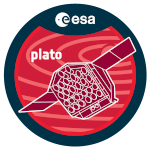Charge densities in stellar interiors: a step towards the understanding of the rotation--activity--age relationship for low-mass stars
1 : Instituto Superior de Gestão / CENTRA - center for astrophysics and gravitation
2 : CENTRA - Center for Astrophysics and Gravitation
Although space-based missions such as CoRoT, Kepler/K2, TESS, and the future data from the PLATO mission have provided a wealth of observational data, the connections between rotation, magnetic activity, and the thermodynamic properties of stellar interiors are still not well understood. To shed light on these connections and their implications for interpreting observational data, we study the internal distributions of net electric charge densities in a set of low-mass theoretical models (0.7 - 1.4 Msun) with varying ages and metallicities, and explore their relationship with observable rotational trends on the main sequence.
The amplitude scattering of charge densities exhibits substantial variation across orders of magnitude with respect to mass, age, and metallicity. Our research shows that models with lower mass have higher net charge density values through the radiative zones compared to models with higher mass. We also show that the properties of the charge evolve on the main sequence following a Skumanich-type relation. Furthermore, the amplitudes of net charges exhibit a sharp decline during the first half of the main sequence, which may be related to the weakened magnetic braking. Finally, we verified that high-metallicity stars have higher net charge amplitude values than low-metallicity stars, implying that high-metallicity values favor lower rotation rates as some recent studies indicate. Thus, our results show that the properties of net charge density distributions in stellar interiors can be associated with all major observational trends for the main-sequence rotation of low-mass stars.

 PDF version
PDF version
